Twitter is dead. Sure, Elon Musk has rebranded the app it used to be as X, but the vibe has totally changed. Instead of being weird in a good way, X now feels weird in kind of a bad way. While there were always different communities using Twitter, the boundaries between them have been torn down. Unless you’re into politics, tech startups, culture wars, and bad memes, X probably isn’t the community you’re looking for anymore.
Which is where Bluesky comes in.
Bluesky is the closest thing to old Twitter going. It’s not a one-to-one replica, but it’s attempting to recreate the same eclectic feeling. To many people, it seems like it’s succeeding.
So, let’s dig in and look at what Bluesky is, how it’s different from X, and whether it has a future.
Table of contents:
What is Bluesky social?
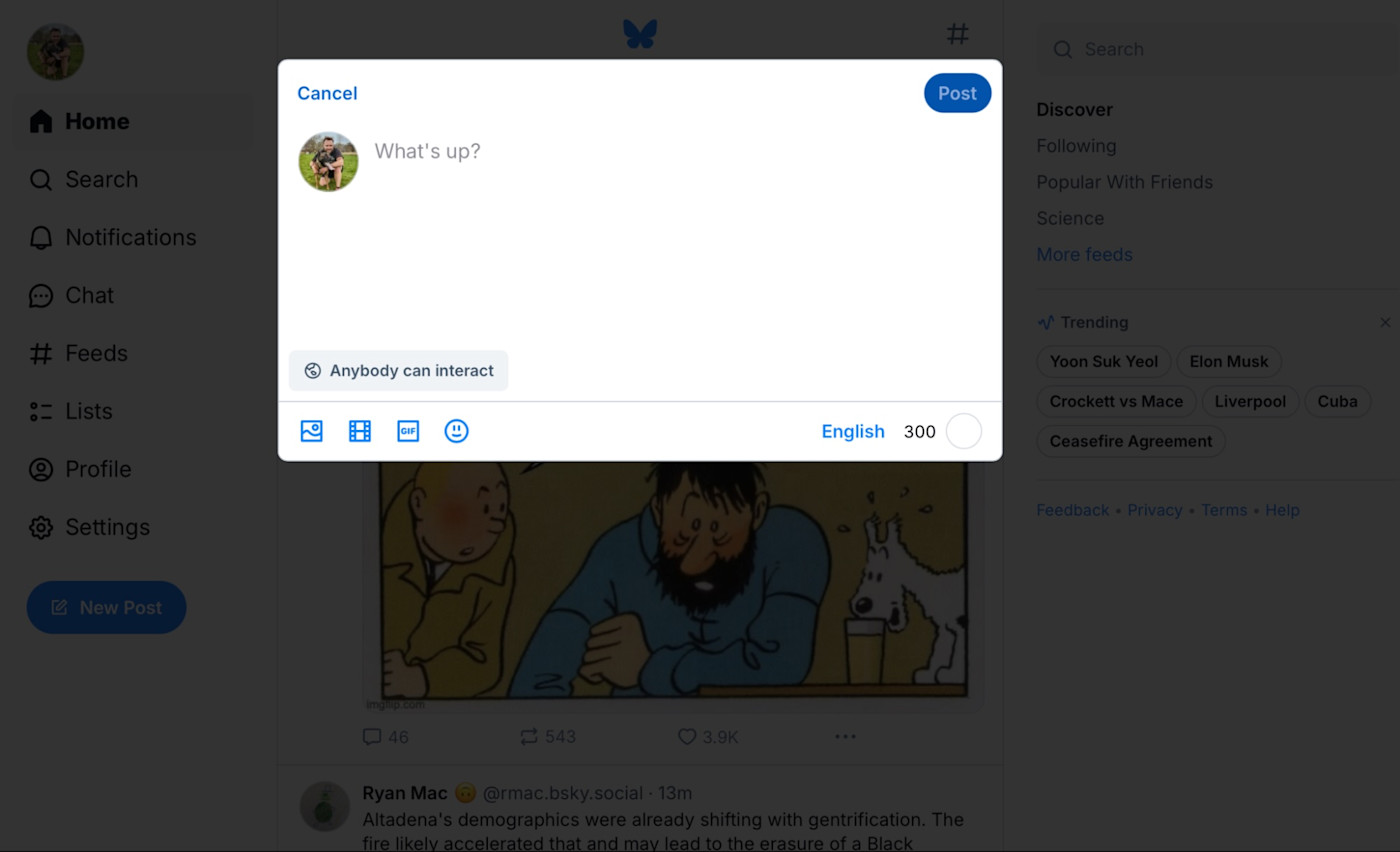
Bluesky is an open and decentralized social network. It’s essentially modeled on Twitter, which means:
-
Everyone gets a profile and a username/handle.
-
You can follow other users, and other users can follow you.
-
Anyone can create a post. It can be text, an image, a meme, a video, a GIF, a link to something, or any other normal kind of social media post. Posts have a maximum of 300 characters.
-
You can reply to most posts, repost them, or repost them with a comment.
-
You can send direct messages to other users.
-
There are hashtags and likes and all those other social network bits.
In short, Bluesky is really, really similar to Twitter and every other Twitter alternative, including Mastodon, Threads, and X. For all that, though, there are still some things it does differently.
What makes Bluesky different?
Bluesky is attempting to build “an open foundation for the social internet.” In practice, this means that the tech underlying Bluesky is open for anyone to build on top of, and users get a lot more control over what they see in their feeds. Let’s take these one by one.
Bluesky’s tech is open
Bluesky has developed the Authenticated Transfer Protocol (AT Proto). It’s a federated protocol, so other developers can operate alternative servers that can interoperate with Bluesky. (This is similar to how Mastodon/Threads use ActivityPub, but they aren’t interoperable.)
The first place you’ll encounter this is when you sign up to Bluesky. Account handles include both a username and a domain name. For example, my Bluesky account is @harryguinness.bsky.social. The vast majority of people are also on bsky.social, but you’ll occasionally see users with a different host. If you have the technical chops, you can also set one up yourself.
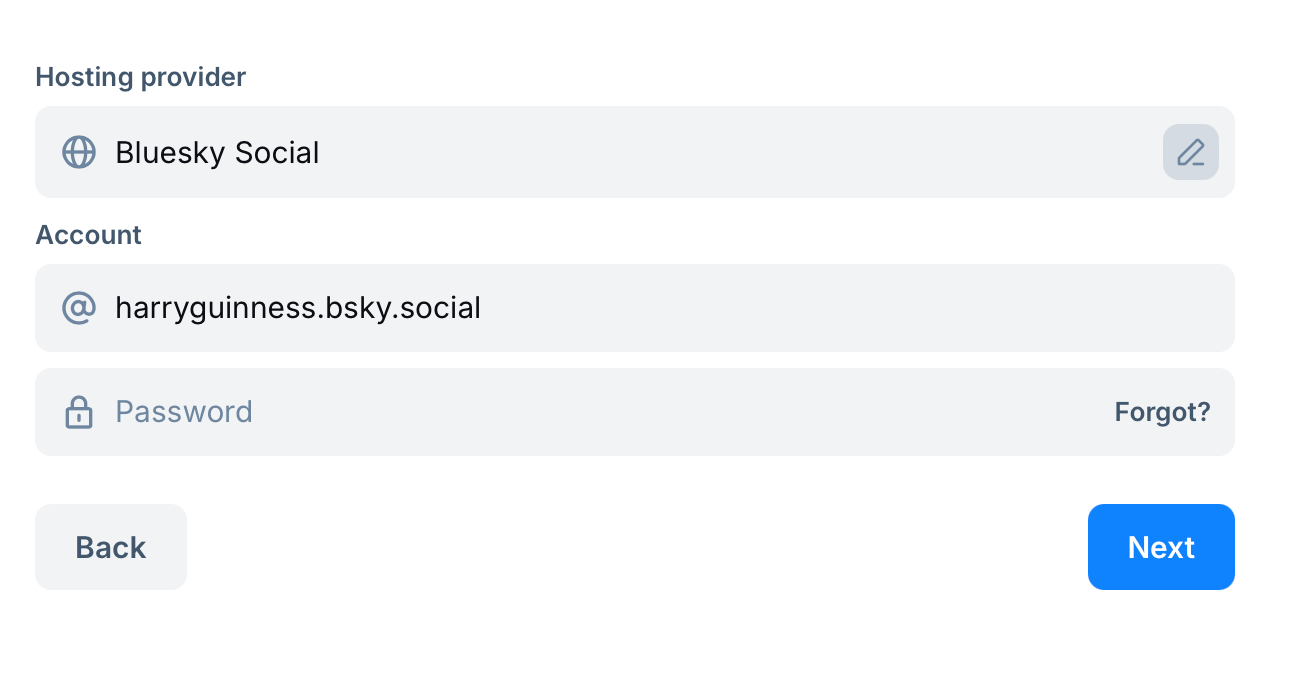
This also extends to things like client apps. While there’s an official Bluesky app, there are also third-party apps that offer a different experience.
The one caveat to all this is that Bluesky is very much in its infancy. While other developers can build on top of Bluesky, there aren’t yet loads of alternative hosts and apps that offer their own take on a Twitter-like social network.
Bluesky gives users control over their experience
The other area where Bluesky sets itself apart is with how much control you get over the content you see.
Like other social networks, Bluesky is based around feeds. The difference is that you can subscribe to different kinds of feeds on Bluesky, or even create your own. If you don’t like what the amorphous algorithm is serving, you don’t have to accept it.
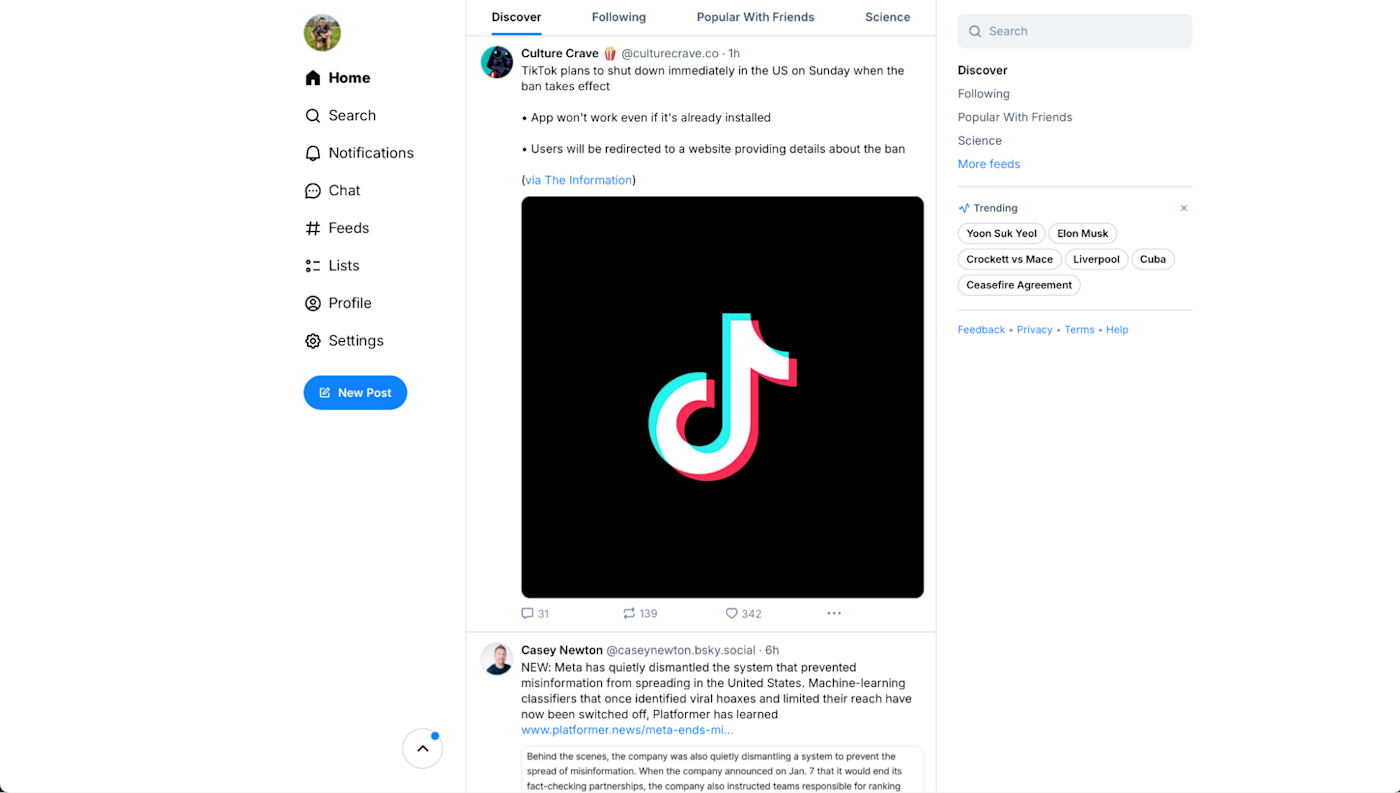
By default, Bluesky gives you two feeds: an algorithmic Discover feed and a chronological Following feed. But it also suggests new feeds for you to check out. To give you an idea of the kinds of feeds available, here are some that I’ve liked:
-
Popular With Friends: A feed of content that the people you follow have liked or engaged with.
-
Science: A curated feed of science content. Approved scientists and science communicators can share posts with a test tube emoji, and they appear in this feed. (Some other feeds work the same way.)
-
Mutuals: Posts from people who follow you back.
-
Pinned: A feed of posts I’ve replied to with the thumbtack emoji.
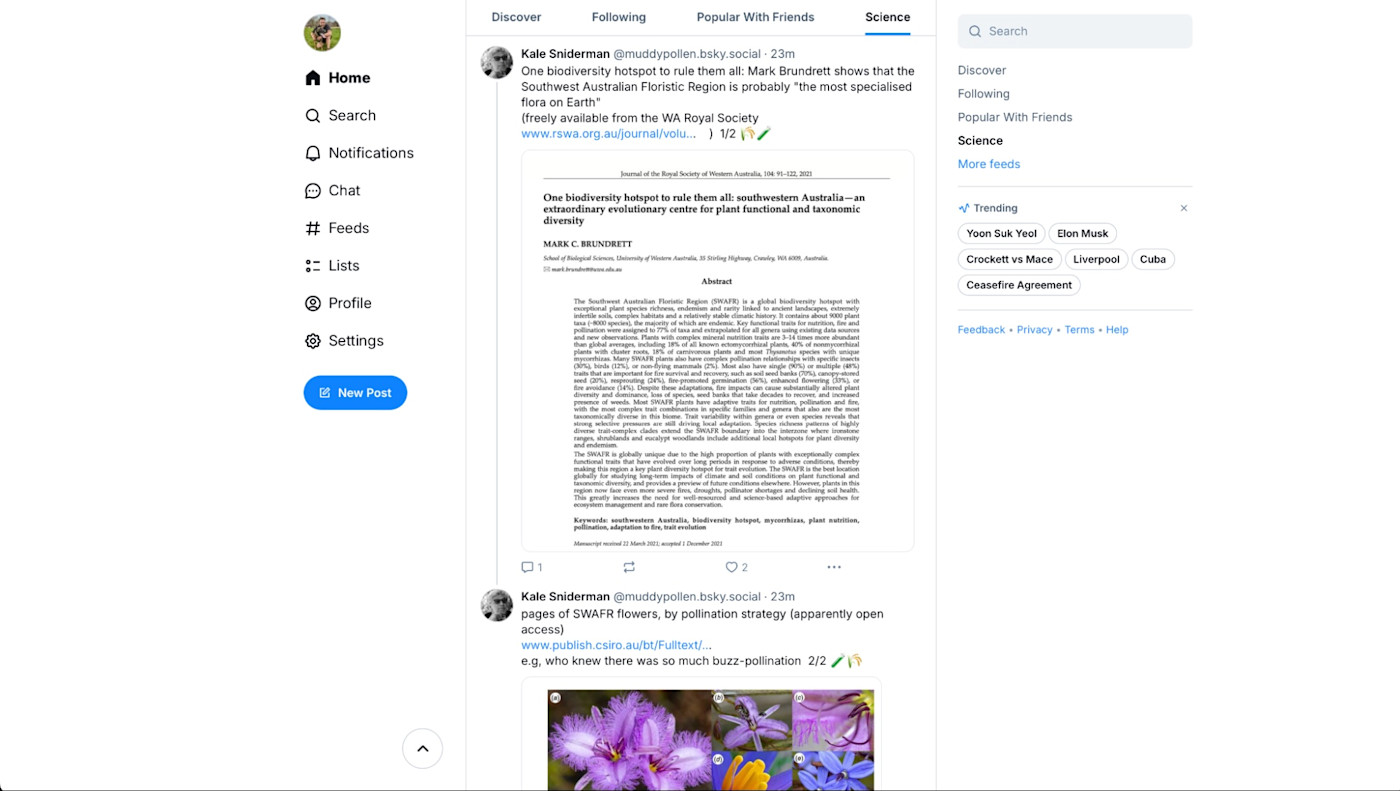
You can find more than 45,000 feeds to subscribe to on Goodfeeds or, if you’ve got the programming knowledge, build your own.
On top of all this, Bluesky has strong block and mute tools. You can subscribe to public block and mute lists, mute or block individual users, and mute or block specific phrases or words.
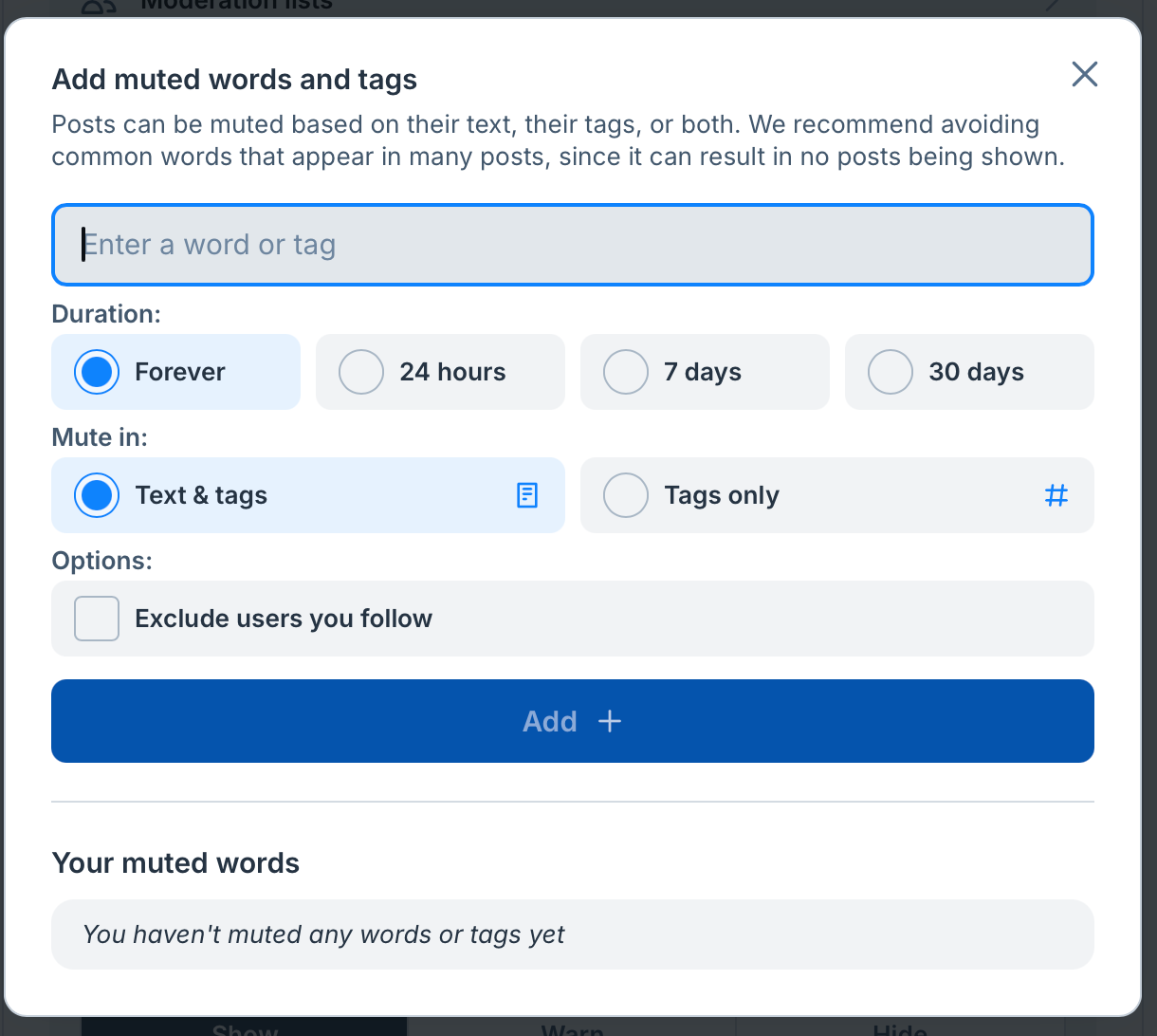
And Bluesky also allows for third-party moderation services that automatically label or hide content. For example, there’s a service that labels users who share a lot of AI-generated content as well as Bluesky’s official moderation service. (It’s worth noting that while this is a great idea, it doesn’t seem to be as widely implemented or easy to use as it needs to be to make it effective.)
Combined, all these features mean that Bluesky gives you a lot of control over what you’re going to see in the app. Not everything works quite as well as I’d like, nor is Bluesky anywhere near as popular as Twitter was at its height. But if it continues to take off, these features allow for an exciting and vibrant public square.
Bluesky vs. Twitter
On the surface, Bluesky is very similar to Twitter (now called X). They’re both (mostly) public social networks that are based around one-to-many communication. But there are a handful of key distinctions that make them very different social networks.
-
Bluesky strives to be open and distributed; X is controlled by a single company.
-
Bluesky doesn’t allow ads (though it has a premium subscription in the works).
-
Bluesky allows you to use third-party apps and services.
-
Bluesky gives you a lot more control over what content you see.
-
Bluesky has a significantly smaller number of users; a lot of the people you can follow on X just aren’t there yet.
-
Bluesky has an open API, so it’s significantly easier to automate with Zapier and other tools.
If all this sounds good, then Bluesky is probably worth checking out.
How to sign up for Bluesky
Bluesky is really easy to sign up for:
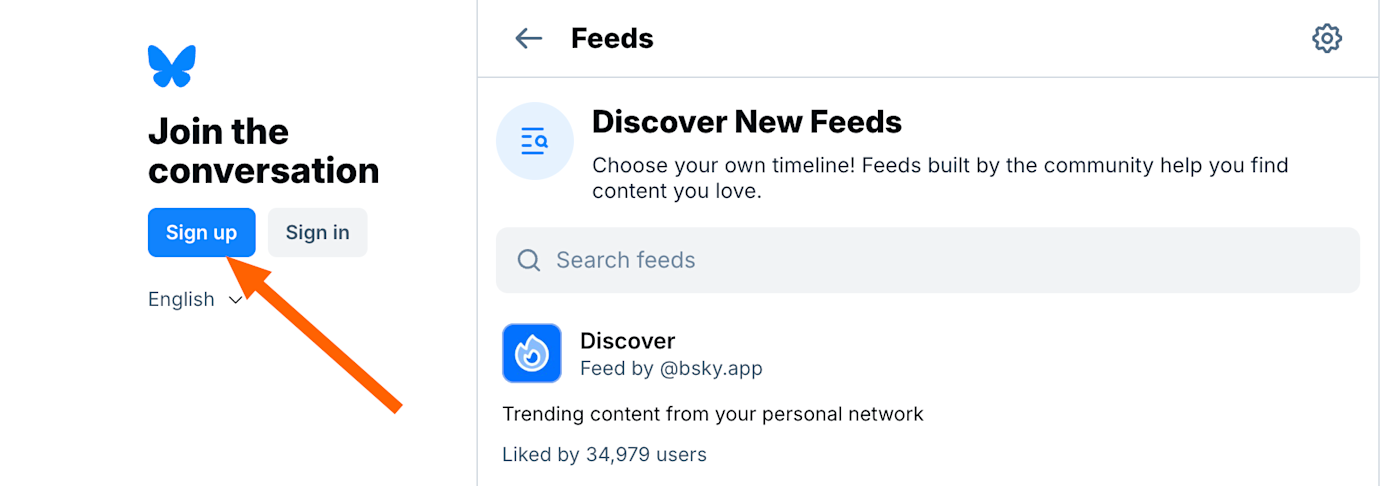
-
Head to the Bluesky web app or download the iOS or Android app (or grab a third-party app).
-
Sign up for an account.
-
Follow the onboarding to get started.
Unfortunately, there’s no reliable way to automatically import the people you follow on X or even find your phone contacts. Unless you do things manually, starting on Bluesky means starting from scratch.
Is Bluesky the future of social media?
Bluesky is having a major moment. It’s reminding a lot of people of what Twitter used to be like in the early days. Of course, Bluesky has a long way to go. It has a fraction of X’s users, and the platform, while making big promises, is still under development. There are also multiple other social networks, including X, Mastodon, and Threads, that are all vying to be Twitter’s successor in cultural relevance.
Automate Bluesky
One of the reasons you might choose Bluesky over X is that its open API means you can connect it to Zapier to automate your workflows. Automatically create new posts on Bluesky based on activity in your other apps, or send Bluesky posts to the other apps you use most. Get started with one of these pre-made templates.
Zapier is the leader in workflow automation—integrating with thousands of apps from partners like Google, Salesforce, and Microsoft. Use interfaces, data tables, and logic to build secure, automated systems for your business-critical workflows across your organization’s technology stack. Learn more.
Bluesky FAQ
Bluesky is still a baby app, so you might still have some questions. Here are some answers.
Who owns Bluesky?
Not Elon Musk. Bluesky is owned by CEO Jay Graber (the biggest shareholder) and other employees, though it was originally founded by former Twitter CEO, Jack Dorsey.
How many users does Bluesky have?
The Bluesky user count currently stands at more than 20 million. Seems like a lot, but X has more than 300 million, so Bluesky is still playing a lot of catch up.
Is Bluesky free?
Yep. And currently, there aren’t even ads to support it. There is a premium subscription in the works, though.
Related reading: